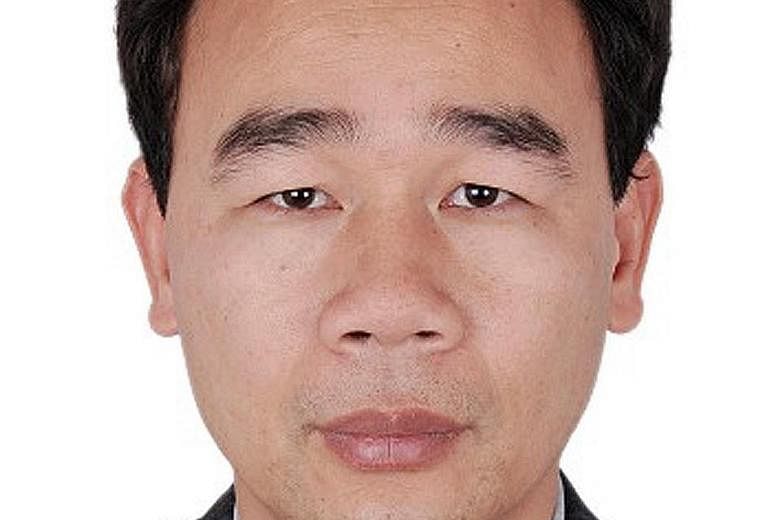It was a close race but China finally pipped rival Japan in October last year, when Chinese enterprises signed a joint venture agreement with their Indonesian counterparts for the Jakarta-Bandung high-speed railway project.
China won the bid by offering Indonesia a more competitive financial package.
It is worth noting that the Jakarta-Bandung high-speed railway, spanning 150km and going up to speeds of 250kmh to 300kmh, will fully adopt Chinese standards, technology and equipment. China will manage the whole process of survey, design, construction, operation and management.
The project is a milestone in the Chinese government's progress in "railway diplomacy".
There has also been progress in the Sino-Laos and Sino-Thailand railway projects with construction expected to start within the year.
Last November, the Thai Cabinet approved a draft cooperation framework for the Sino-Thai rail project, which involves the construction of two routes that together cover 867km at a cost of 350 billion baht (S$14 billion).
As for the Laos government, it passed a resolution in September last year for the construction of the US$6.8 billion (S$9.5 billion) Sino-Laos railway.

China has enjoyed initial success with its rail diplomacy, firstly because it attaches great importance to its high-speed rail sector. Both President Xi Jinping and Premier Li Keqiang have acted as spokesmen for the high-speed railway "going out" and promoted China's high-speed rail technology many times at important occasions. They regard it as a crucial part of the "Belt and Road Initiative", implying that China might be willing to invest significantly in such projects.
Second, the Chinese show "enough sincerity". Take the Jakarta-Bandung project as an example. During the high-profile negotiations, China agreed not to use Indonesian government funds or ask for government guarantees for loans. In other words, China provides full loans of US$5.5 billion with 2 per cent annual interest rate without requiring "Indonesian government budget and debt guarantees".
Similarly, China also offered substantial concessions during negotiations on the Sino-Thailand and the Sino-Laos railway projects.
Third, China's railway system is more highly competitive in technology and cost. China's high-speed rail is known for its speed and fast construction.
In recent years, China has developed its own technology in core areas such as traction power transmission systems and network control system, for which it holds the intellectual property rights.
That has enhanced the core competitiveness of its high-speed rail model. According to a July 2014 World Bank report, the construction costs of China's high-speed railways are not more than two-thirds of other countries.
Fourth, the Sino-Laos and Sino-Thailand railways will form a vast railway network connecting local areas, and that is a feat which neither Japan nor other countries can match. In the case of Thailand, Japan won the railway contract linking Chiang Mai to Bangkok, but it will be difficult for that stretch of railway to be compatible with the Sino-Laos railway and China's domestic railway network in the future.
China still faces multiple difficulties in South-east Asia when it comes to such rail projects, firstly because its lending interest rate is high. Large sums are involved and less developed South-east Asian countries struggle to raise the funds. For the Jakarta-Bandung rail project, Japan offered a surprisingly low interest rate of 0.1 per cent.
That spurred the Chinese to compromise repeatedly and finally agree to provide full loans in the absence of Indonesian government funding and debt guarantees. China's limit is likely to be an annual interest rate of 2 per cent and that is where it is clearly inferior to Japan. That alone significantly decreases China's competitiveness when vying for large rail projects in South-east Asia.
Second, it remains to be seen what economic returns China will reap. Railway transport is mainly divided into passenger and freight.
For passengers, given the current utilisation rate and demand - based on measures such as train frequency, fare level, number of trains and passengers - it would seem that supply of high-speed rail is set to outstrip demand given the high cost of such travel.
As for freight, low-priced products (such as food and minerals) dominate the flow of agriculture-based economies in South-east Asia. As such, the economic benefits of time saved by using high-speed rail are negligible.
Third, South-east Asian countries may negotiate harder for concessions. While China made significant concessions for the Jakarta-Bandung project, there is no certainty that it will do the same for Thailand and Laos.
Fourth, some quarters in the host countries continue to have misgivings about China's growing influence and that gives rise to internal political pressures.
There are other domestic issues, including concerns about environmental protection, local labour employment and local procurement, and last but not least, regional ties.
- The writer is professor at Yunnan University and a visiting senior fellow with the China Programme at the S. Rajaratnam School of International Studies, Nanyang Technological University.
- S.E.A. View is a weekly column on South-east Asian affairs.


